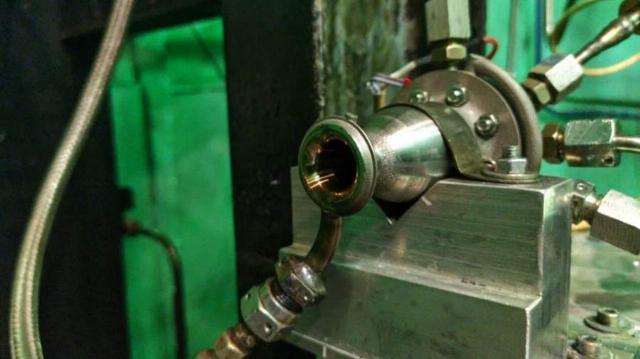What technologies have allowed not only to reduce the weight of the structure, but also to reduce its cost
Russian scientists have developed a special ultralight rocket for launching satellites. Its weight is 14 tons, which is significantly less than existing analogues. The whole secret lies in the use of cryogenic tanks made of composite materials, which make the rocket not only lighter, but also cheaper. Currently, tests of its components are being conducted in the Russian Federation. For more information, see the Izvestia article.
Russian scientists have developed a special ultralight rocket for launching satellites. Its weight is 14 tons, which is significantly less than existing analogues. The whole secret lies in the use of cryogenic tanks made of composite materials, which make the rocket not only lighter, but also cheaper. Currently, tests of its components are being conducted in the Russian Federation. For more information, see the Izvestia article.
New launch vehicle
Students of the D.F. Ustinov Baltic State Technical University Voenmeh, together with a startup from St. Petersburg, have developed an ultralight SpaceNet launch vehicle for launching small spacecraft. The project actively uses high-precision computer simulation with AI to optimize the rocket configuration. This was reported to Izvestia by the press service of the NTI platform (National Technology Initiative).
According to the authors of the project, the key innovation is cryogenic tanks made of composite materials (the first experience in Russia), which reduce the weight of the structure by 15-20% compared to analogues. Currently, the approximate mass of the rocket is 14 tons.
— Engine parts are manufactured using bimetallic 3D printing technology from bronze and steel. This alloy increases the temperature in the combustion chamber and reduces fuel consumption," said Igor Volobuev, one of the leading participants in the project.
According to him, the rocket may be in demand for regular replenishment of the low-orbit grouping of small spacecraft formed within the framework of national programs. Currently, small devices, as a rule, are withdrawn as a passing load. And the availability of a specialized ultralight rocket will allow flexible selection of orbital parameters and reduce the time required to complete launch orders. At the same time, such launches will be competitive compared to medium-class rockets.
According to the roadmap of the project, prototypes of the propulsion system of the upper stage and the turbo generator have been developed, a mock-up of the upper stage has been created, and specialists have begun manufacturing a prototype of liquid-fueled rocket engines of the first stage. The rocket is designed to launch spacecraft into low Earth orbit with heights of 500, 800 and 1,500 km. In addition, technologies for the orbital maintenance of small spacecraft are being developed.
"The development of the project will include 3D printing of rocket engine components from heat—resistant alloys, the creation of new materials based on heavy-duty fibers, the development of environmentally friendly rocket technologies and the promotion of domestic microelectronics," said Pavel Arkhipov, chief designer of the project.
He added that the project participates in the selection of proposals for the Supervisory Board of the Agency for Strategic Initiatives (ASI).
Practical application
Ideas regarding research and development (R&D) The team has good results, but there are doubts that all the planned tasks will be realized, says Vladislav Ivanenko, CEO of Sputnix, expert of the Aeronet NTI working group.
— Whether the team has the resources for such projects is an open question. Hopefully, the rocket will be able to fly into space. But for this it is necessary not to stop at the R&D stage," he noted.
Dmitry Kornev, editor of the MilitaryRussia website, agrees with this opinion. According to him, it is important to determine whether it is worth engaging in such projects, given the possibility of payback and the real need for solutions being created.
The project is definitely interesting for the development of the Russian aerospace sector, because it is important to have all types of launch vehicles: superheavy, heavy, light, ultralight, and geophysical. Accordingly, the proposed device may occupy one of the niches. Most likely, it will cost more than launching on associated launches, for example, with the same Soyuz. But in order to fulfill its core tasks, it can be extremely in demand by individual companies from the industry, said Anton Alekseev, CEO of the Novy Kosmos Aerospace Corporation, market expert at NTI Aeronet.
— Currently, Roscosmos is independently developing projects to create a reusable launch vehicle. The proposed option will be able to compete to some extent in terms of such indicators as launch cost or technical characteristics, the expert believes.
According to him, competition between different rocket projects stimulates the development of technologies, reduces costs and opens up new opportunities for the Russian space industry.
Anton Bely

